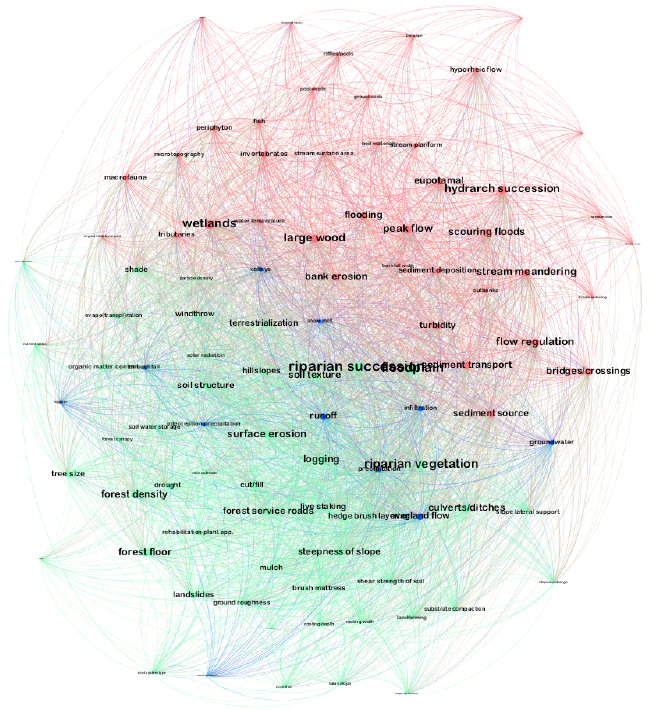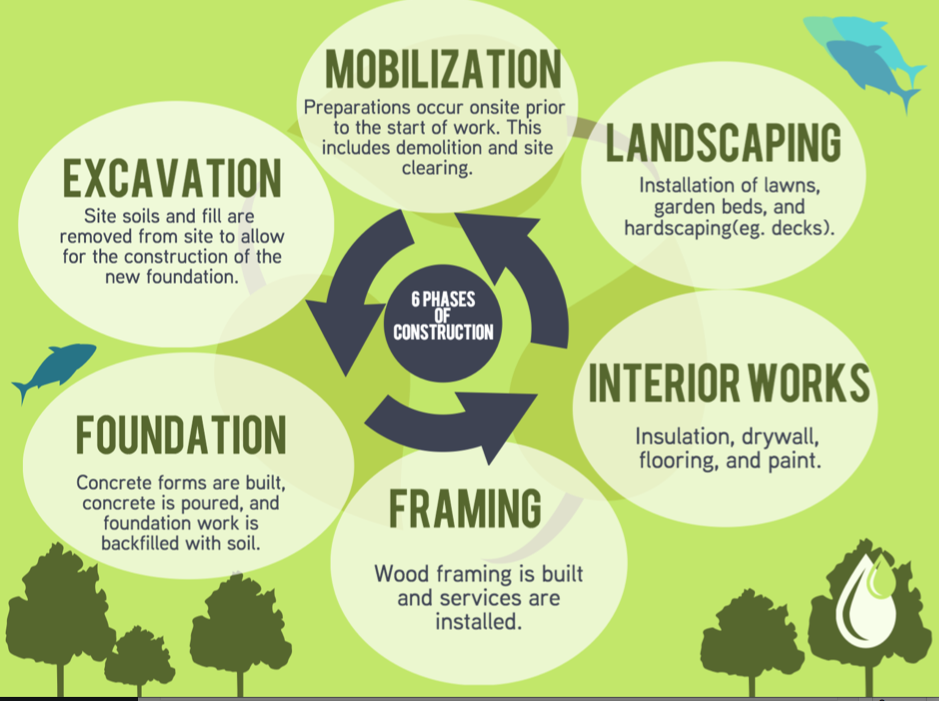Environmental Contamination/ Reclamation
The following Major Projects investigate Environmental Contamination/ Reclamation issues.
Conceptualizing Stream Ecosystem Restoration
P. Clemens Langemeyer, MLWS 2016
Land managers and conservationists generally agree that ecocentric restoration is a mandatory practice with regard to the development of a sustainable future. Present-day restoration projects continue to be undermined by conceptual models founded decades ago: river systems were seen as inherently homogenous, held in equilibrium by natural processes, and that these processes remained constant regardless of scale. This has led to the continued misunderstanding of the heterogeneity and interconnectivity of streams, a perception that is still represented by conventional restoration practices.
The Stream Ecosystem Network is an interactive digital mind map that stimulates thought with respect to ecosystem connectivity, allowing users to visualize various components of stream ecosystems, and how they are interrelated. Environmental professionals capable of identifying and communicating interactions between system components across a multitude of disciplines (systems-thinkers) are a valuable asset to the continued development of this network. This project reviews and discusses how the network might benefit restoration ecologists throughout project development. Several published guidelines serve as a platform for discussing restoration strategy development and the re-integration of riverine natural processes.
British Columbia Reclaimed Mine Sites:
Case Studies and Lessons Learned
Adrienne Turcotte, MLWS 2015
This project aimed to answer the following questions: What are some of the techniques that are used to reclaim metal mines in BC? Which techniques were successful? Were there any similarities across the case studies in the different environments? Which techniques caused challenges in reaching ecological restoration? Were there any similarities across the case studies in the different environments?
By investigating examples at specific mines, knowledge on implementing successful ecological restoration can be gained. This study focused on several metal mines in British Columbia that are representative of the province’s ecological environments. The assessment provides a base from which we can learn from the successes and challenges encountered in these reclamation cases, and inform future approaches to mine closure planning. This project is intended to be a resource for those looking to understand mining reclamation practices in BC. This project may be particularly useful to those studying reclamation or mine closure, mining inspectors new to these mines, or practitioners looking to broaden their knowledge of real world mining reclamation examples.
Cumulative Ecological Impact of the Residential Construction Industry on Watershed Health in Three North Shore Communities in the Lower Mainland of BC
Erika Nassichuk, MLWS 2015
There are many issues associated with the impacts of residential construction on watersheds. Examples include: sediment-laden or chemically contaminated water entering into watercourses, and a trend towards larger building footprints that can reduce the amount of land available for rainwater infiltration. The cumulative effects of widespread construction are not well understood. There is not currently an easy-to-follow guide to help builders and contractors minimize damage to the surrounding watershed while building or renovating single-family homes. There are two overall objectives associated with this project. The first is to create a clear, easy to follow online educational resource that can inform developers of the potential negative impacts of residential construction on watercourses and watersheds. The second objective is to encourage the use of Beneficial Management Practices (BMPs) by the construction industry, in order to facilitate small changes to improve urban watershed health. A guiding framework was developed to aid both developers and homeowners to minimize their impact on watersheds by activities.


